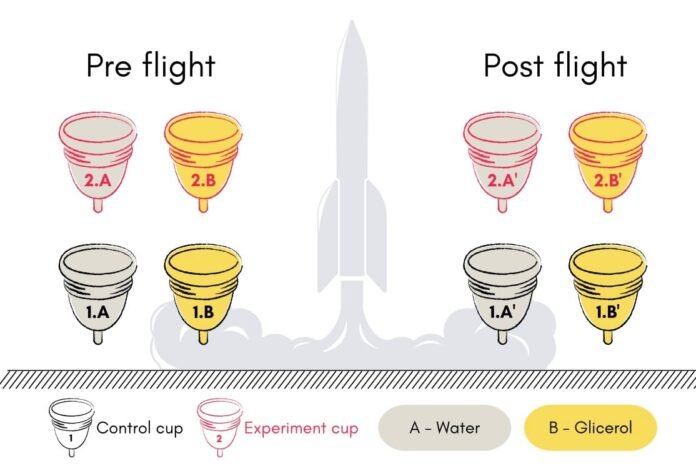Scientists have launched menstrual cups into space for the first time, testing whether these reusable devices can withstand the extreme conditions of space travel. The AstroCup mission represents a key step toward giving female astronauts sustainable menstrual health options during long duration missions to the Moon and Mars.
Since Sally Ride’s historic space shuttle flight in 1983, when NASA famously asked if 100 tampons would be enough for a week long mission, managing menstruation in space has been an ongoing challenge. Currently, most female astronauts use hormonal contraception to suppress menstruation entirely during missions. While this approach has practical advantages, it’s not suitable for everyone and raises health concerns for extremely long missions as we step further out into the Solar System.
 Sally Ride was the first American woman in space. (Credit : NASA)
Sally Ride was the first American woman in space. (Credit : NASA)
With ambitious plans for lunar bases and Mars expeditions that could last years or even decades, researchers recognised the urgent need for sustainable alternatives. An astronaut participating in multiple Artemis missions for example could face over a decade of menstrual suppression, while someone involved in the full program from 2025 to 2035 might require nearly 20 years of hormonal treatment.
 Artemis I successfully launched from the Kennedy Space Center on November 16, 2022. (Credit : Bill Ingalls)
Artemis I successfully launched from the Kennedy Space Center on November 16, 2022. (Credit : Bill Ingalls)
The AstroCup team, led by L ́ıgia F. Coelho from Cornell University, launched four commercially available menstrual cups aboard the Baltasar rocket during a European competition in October 2022 with two cups flying into space while two remained on the ground as controls. The rocket reached over 3 kilometres altitude during a 9 minute flight that subjected the cups to forces 16 times greater than Earth’s gravity. Before and after the flight, researchers conducted rigorous testing using water and glycerol to evaluate the cups’ structural integrity and leak proof performance.
The space flown menstrual cups performed flawlessly. Visual inspections revealed no signs of wear or tear but more importantly, the cups showed no leakage of either test liquid, maintaining their seal integrity despite experiencing extreme acceleration forces, temperature changes, and pressure variations during flight. The payload’s onboard sensors recorded challenging conditions throughout the journey with temperatures ranging from 32-34°C, humidity dropping to 40%, and atmospheric pressure falling below 70,000 Pascals at peak altitude.
These results suggest that menstrual cups could be a viable solution for managing menstruation during space missions. Unlike disposable tampons or pads, reusable cups would dramatically reduce waste, a critical consideration in space where every gram matters and disposal options are limited. Beyond practical benefits, this research addresses astronaut autonomy and choice in healthcare.
 A record four women simultaneously in space aboard the International Space Station in 2010. Clockwise from lower left: Tracy Caldwell Dyson, Dorothy Metcalf-Lindenburger, Naoko Yamazaki, and Stephanie Wilson. (Credit : NASA)
A record four women simultaneously in space aboard the International Space Station in 2010. Clockwise from lower left: Tracy Caldwell Dyson, Dorothy Metcalf-Lindenburger, Naoko Yamazaki, and Stephanie Wilson. (Credit : NASA)
While encouraging, the AstroCup experiment was just a first step. The test occurred in Earth’s atmosphere and gravity, while the Moon has one-sixth Earth’s gravity and Mars has one-third. These different gravitational conditions could affect how menstrual fluid behaves when cups are removed or repositioned. Future studies must examine how the devices perform across multiple menstrual cycles, including cleaning and storage procedures in the environment of space.
The AstroCup mission proves that testing women’s health technologies for space is both feasible and necessary. With more women joining space programs around the world and missions growing longer, ensuring that female astronauts have safe, effective menstrual management options isn’t just a technical challenge, it’s a fundamental requirement for the future of human space exploration.
Source : One Giant Leap for Womankind: First Menstrual Cups Tested in Space Flight Conditions


